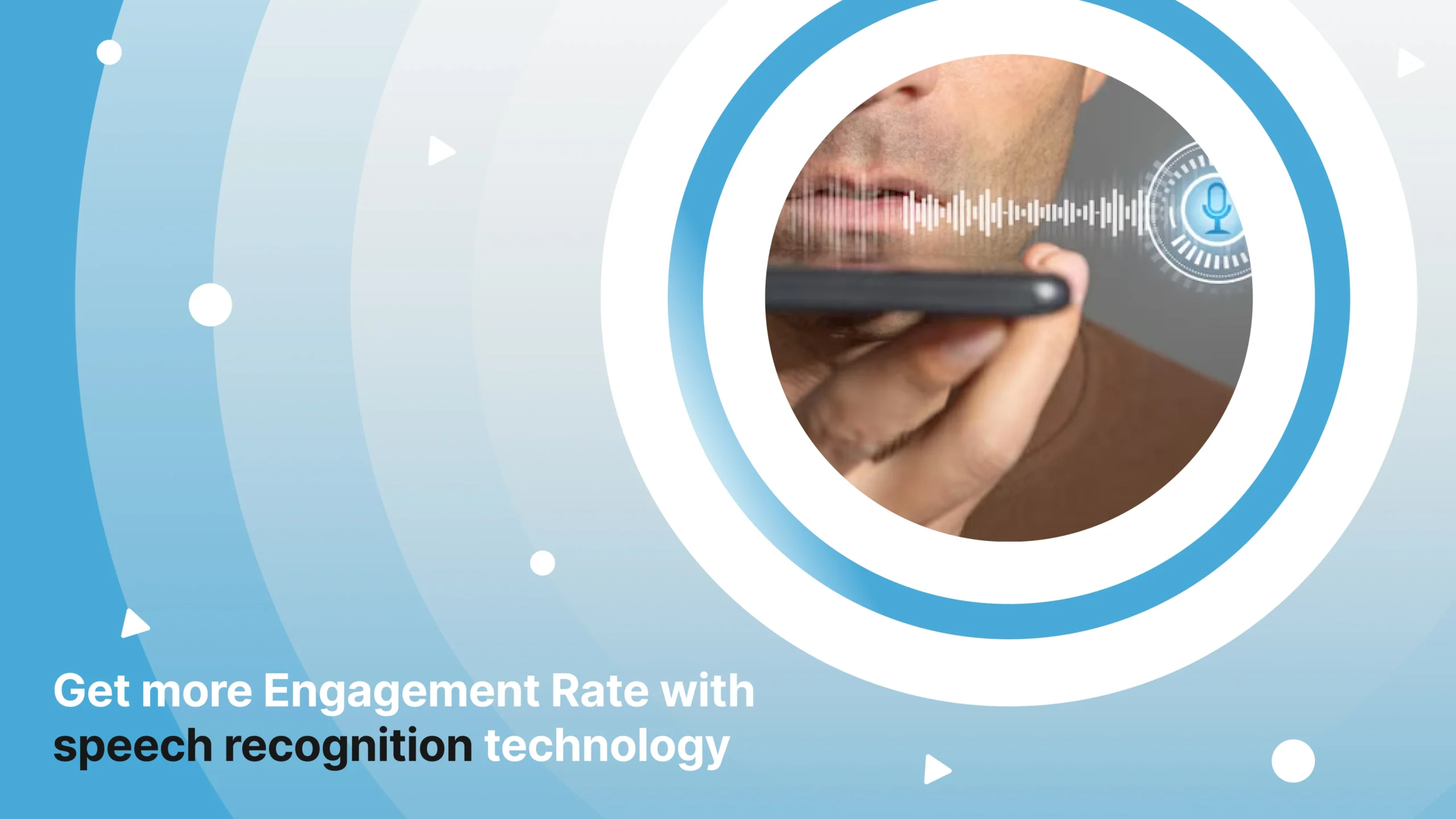Get more Engagement Rate with speech recognition technology
More Engagement Rate
User expectations are changing along with technology. In this digital world, the speech technology Voice User Interfaces (VUIs) have become a potent tool to improve accessibility and user engagement in a time when convenience and diversity are crucial. When we incorporate these Voice-enabled apps and websites, as well as speech technology like Alexa and Siri, we have made integrating VUIs a requirement rather than a futuristic fad.
When we get analytics, we can know that Users are from various ages, skill levels, and backgrounds can engage in more intuitive interactions, so it is reasonable to incorporate speech functionality into digital experiences
What is a Voice User Interface (VUI)?
When we encode the technology into the real world, for instance, with a voice user interface, consumers can communicate verbally with gadgets or apps. VUIs interpret and react to user input using speech recognition and natural language processing (NLP), in contrast to conventional graphical user interfaces (GUIs).
Typical instances consist of:
- Smart assistants (Alexa, Siri, Google Assistant)
- Voice-activated mobile applications
- Smart home appliances
- Customer service IVR systems
Why VUI Speech Technology Matters: Accessibility & Inclusion
Improving accessibility for users who might have trouble using conventional input techniques is one of VUI’s most significant advantages.
- Regarding Individuals with disabilities, Voice control, message reading, and app navigation are all accessible to visually impaired people.
- These will assist people with motor impairments can use systems without touching a keyboard or screen.
- It will make interaction easier for elderly or dyslexic users so that they will not rely on text, and it is advantageous
- Language and Literacy: Voice interfaces can accommodate a variety of languages and dialects, making it easy for users who are not native speakers or have low literacy levels to communicate.
In nations with various linguistic populations, such as India, regional language integration in VUIs broadens digital inclusion
Boosting User Engagement through VUIs
VUIs are changing how people interact with digital goods and services in ways that go beyond accessibility:
- Quicker Communication
Particularly on mobile devices, speaking is frequently faster than typing. Faster search, navigation, and action are made possible by VUIs.
- Convenience Without Hands
It is a great solution for Ideal situations where touch engagement is not feasible, such as when driving, cooking, or exercising.
- Customization
In the future, over a course of time, the voice interfaces can pick up on user preferences to provide more individualized experiences and recommendations.
- Emotional Bonding
In evolution, this technology can convey tone and emotion in the voice, which makes interactions feel more engaging and human.
How to Integrate VUIs into Your Application or Platform
- Determine Use Cases: It is noted that the selection of the purpose is important as selecting speech functions that address actual user issues, such as reading alerts aloud, conducting commands, or conducting voice searches.
- Use Speech APIs: it is helpful that Developers can integrate VUI using tools like Microsoft Azure Speech Services, Amazon Lex, and Google Cloud Speech-to-Text.
- Optimize for Natural Language: Create conversational patterns that are natural rather than artificial.
- Test for Real-World Scenarios: Verify functionality in noisy settings, with varying user behaviors, and across accents.
- Verify Accessibility Compliance: Verify that your voice features comply with national accessibility standards and WCAG (Web Content Accessibility Guidelines).
Challenges in VUI speech technology
- Accuracy Problems: Slang, background noise, and accents can all cause problems for speech recognition.
- Privacy Issues: GDPR and India’s DPDP Act are two examples of privacy laws that must be followed when collecting voice data.
- Context Understanding: To manage phrase variations and context switching, VUIs require strong natural language processing.
The Future of Speech Technology is Multimodal
As we can see that in the future, this technology will be human-friendly, so these Voice interfaces are most effective when used in conjunction with other inputs, such as touch or images, to provide a multimodal experience. For instance, a user can give a command and receive visual confirmation or ideas on the screen at the same time. This hybrid strategy improves the user experience overall and provides flexibility
Final Thoughts
Voice User Interfaces are revolutionizing how people use technology. Businesses can increase user engagement, boost retention, and remain ahead in a voice-first future by incorporating VUIs into their applications in addition to making them more accessible.
Voice is the interface of the future that you cannot afford to overlook, whether you are developing a smart app, a bilingual website, or a mass-market product.
Website: https://www.globaldatasysgroup.com/

